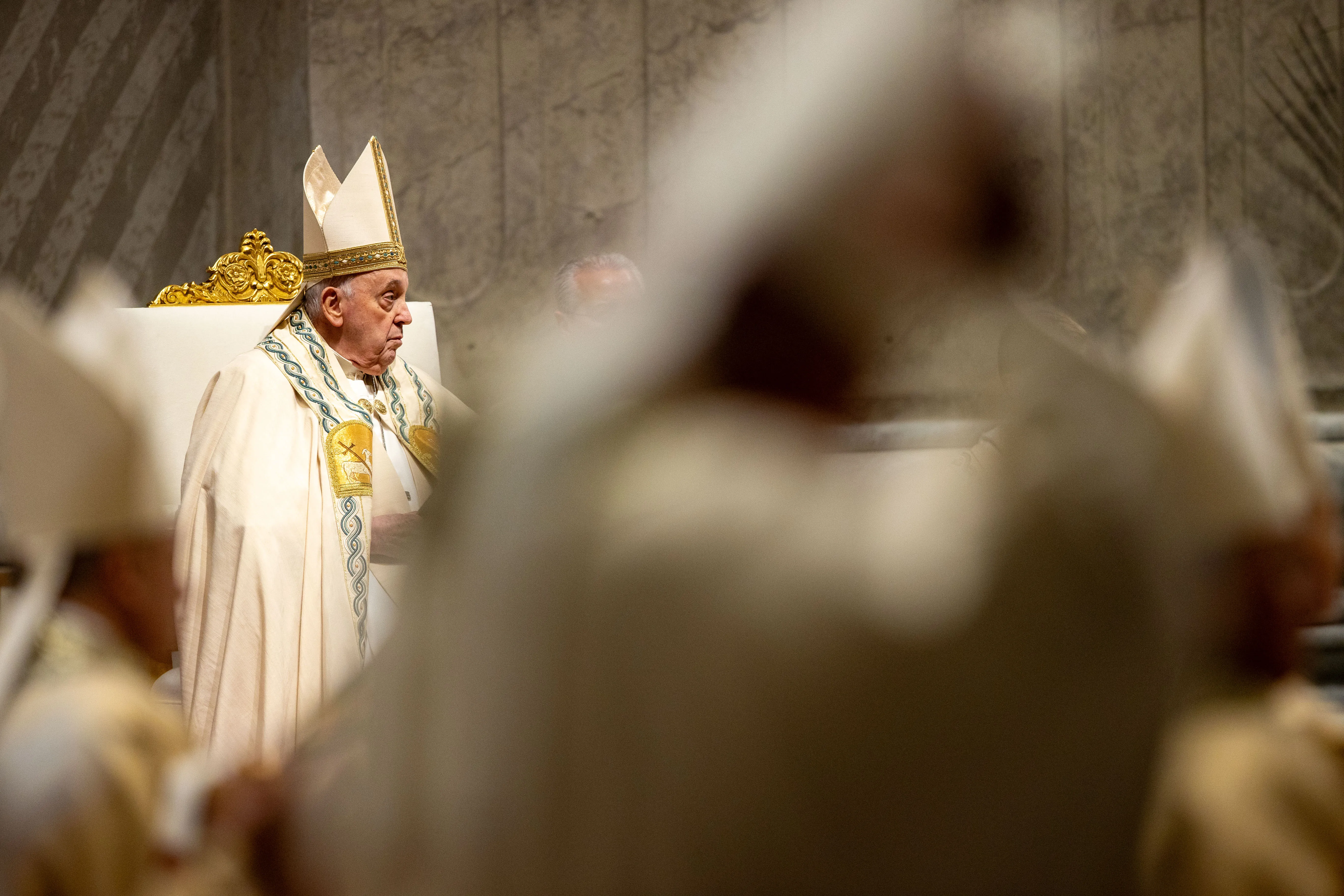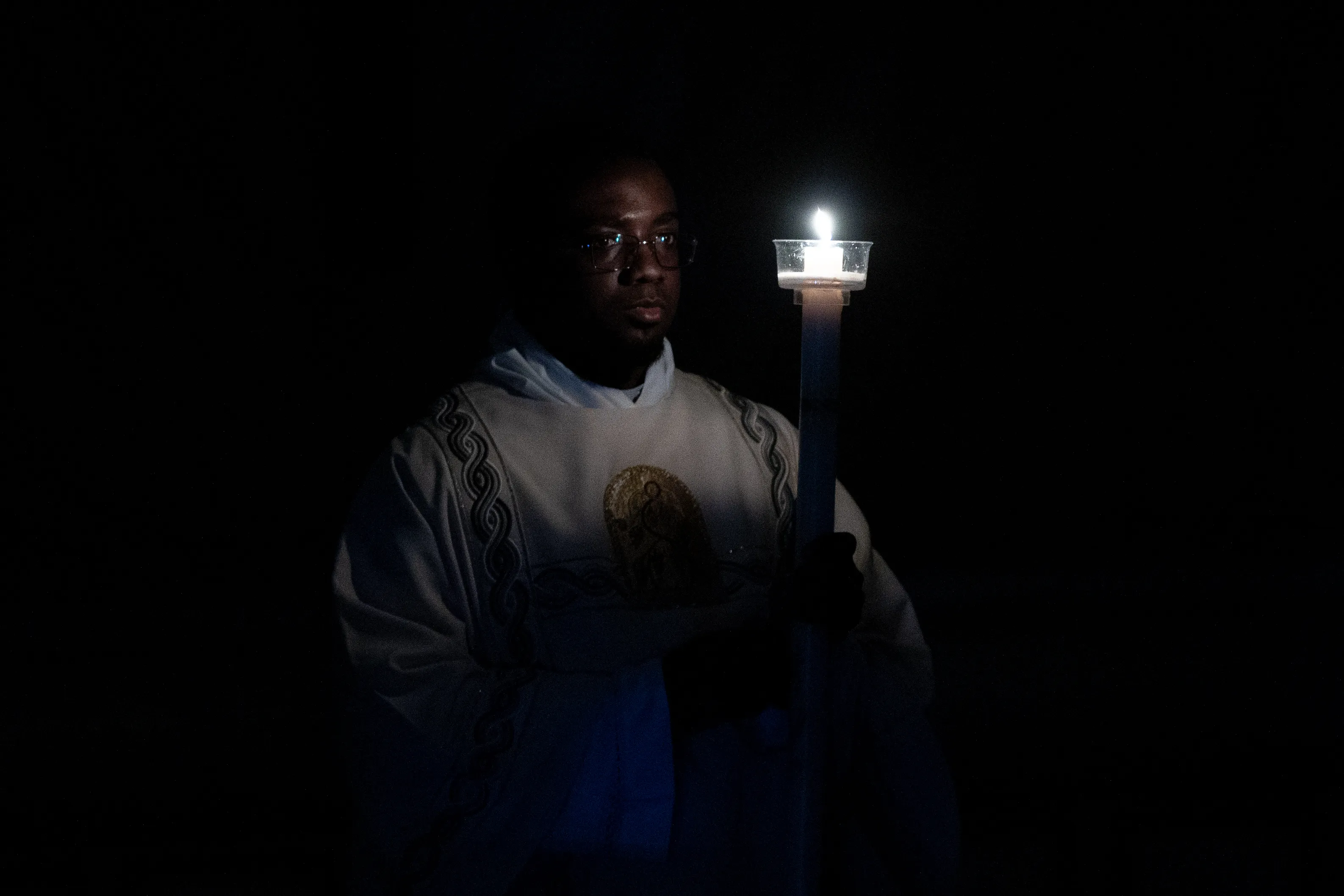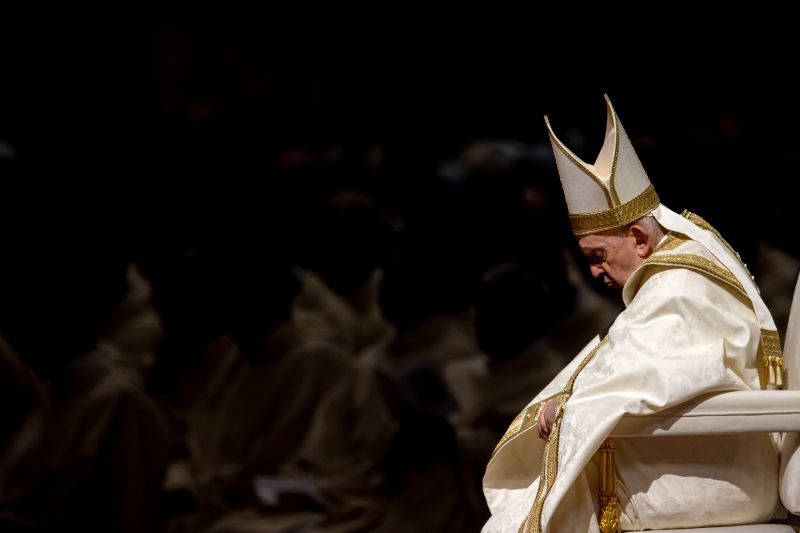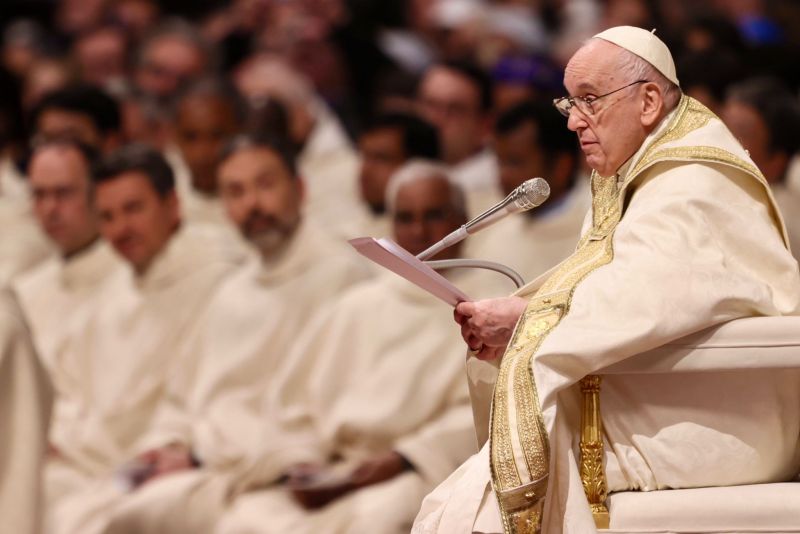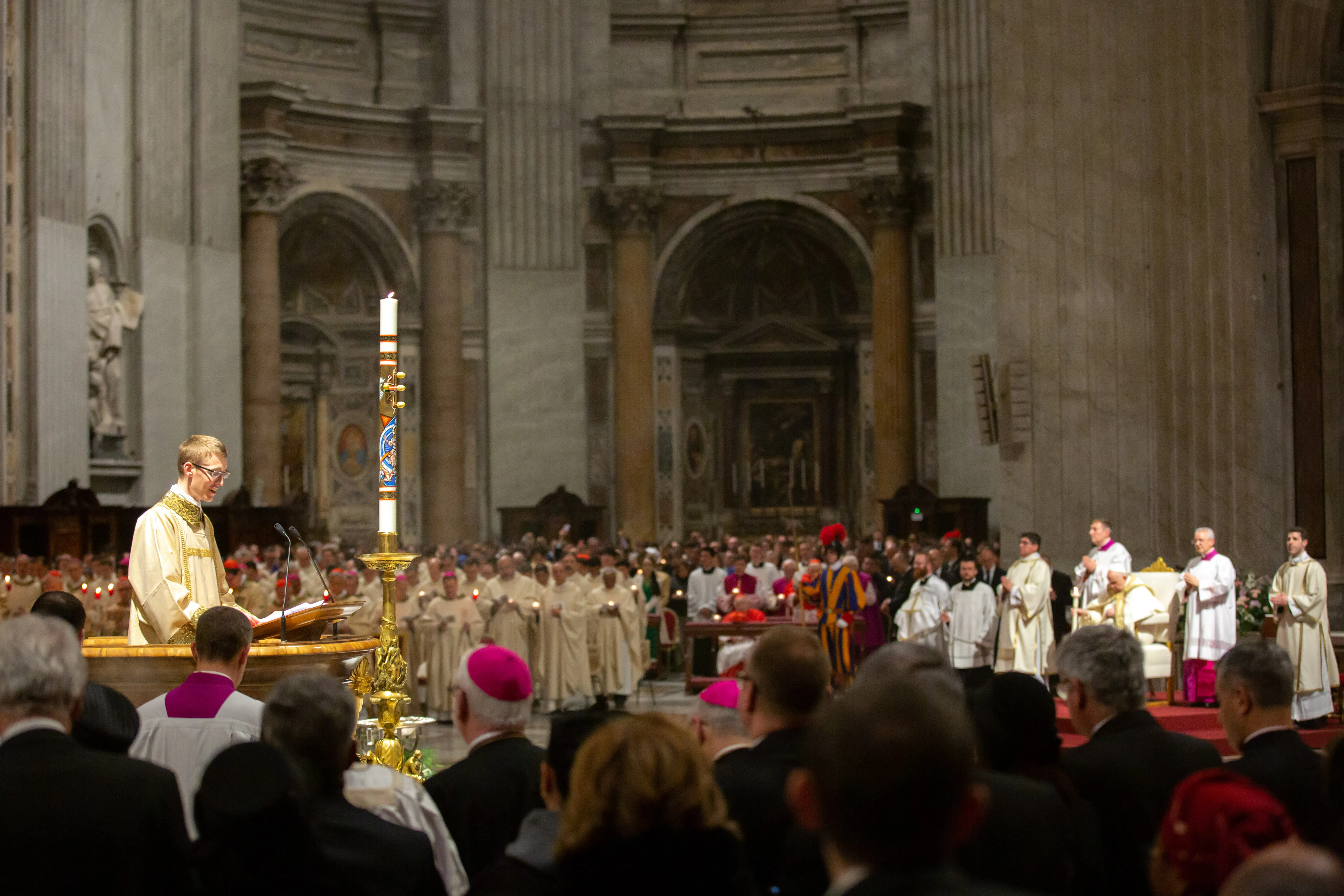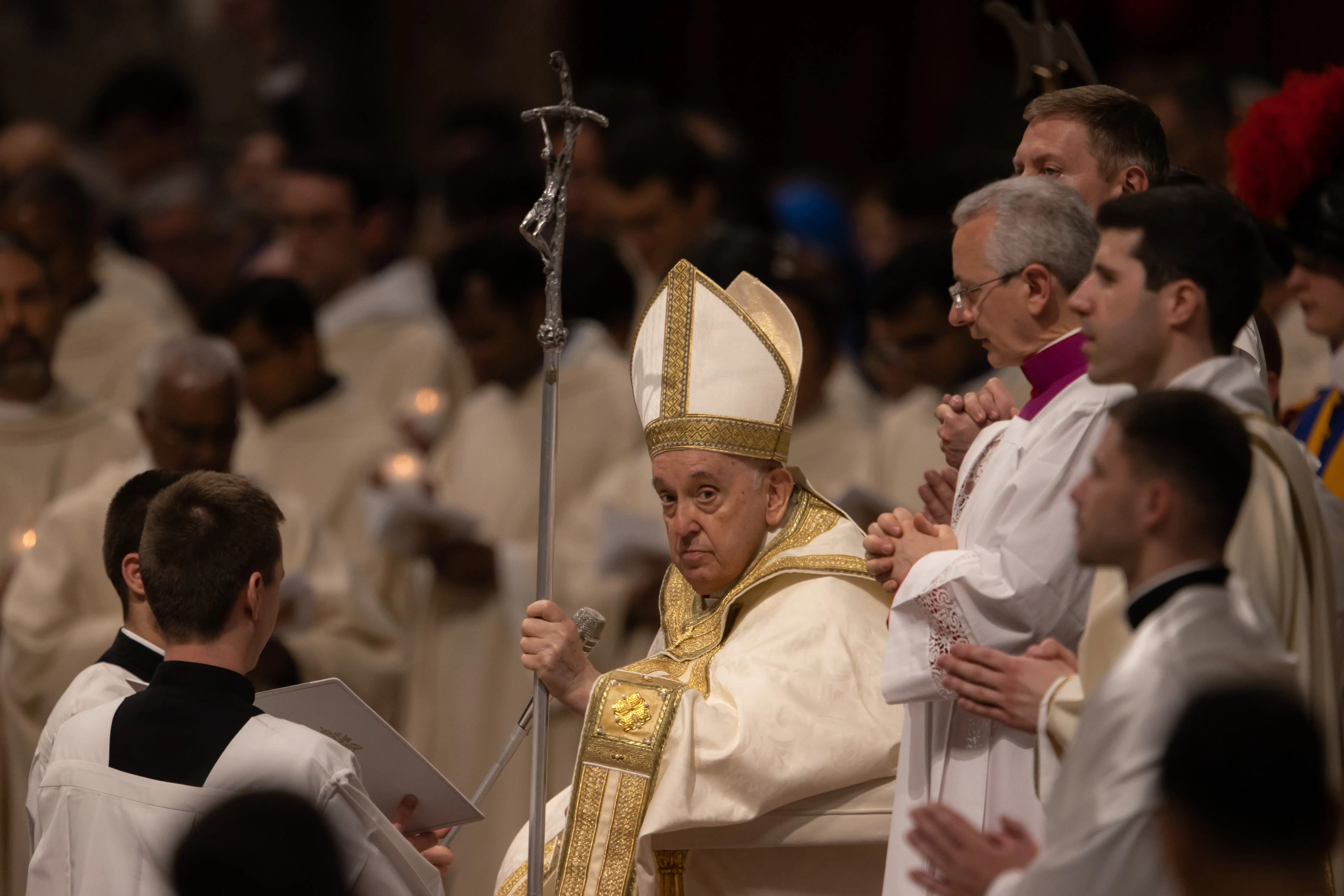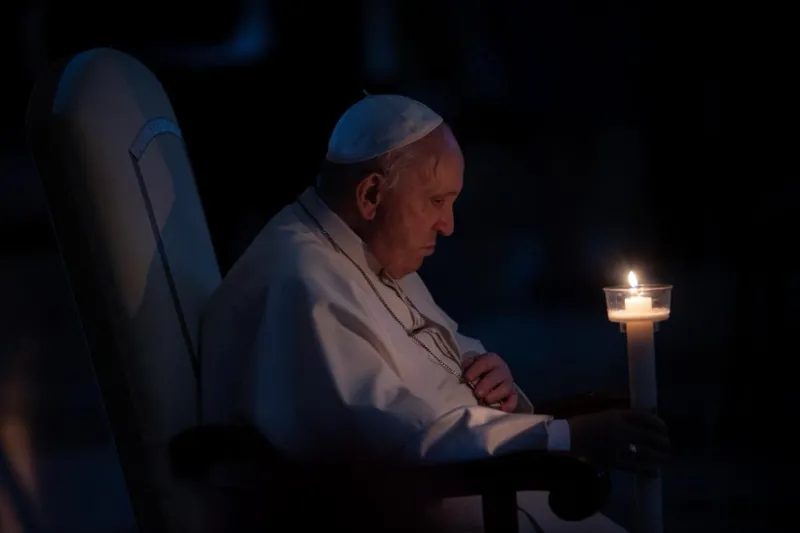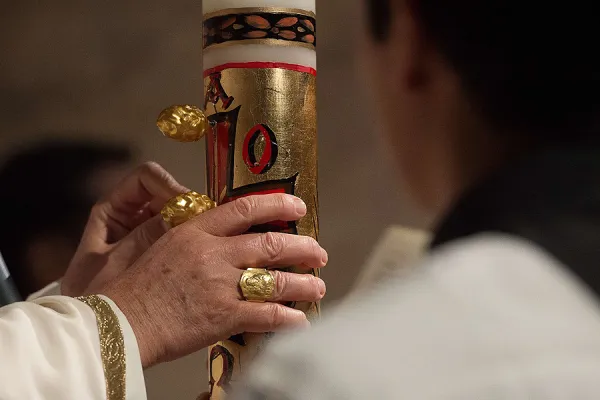
Denver Newsroom, Apr 3, 2021 / 12:01 pm (CNA).- Despite difficulties of the COVID-19 pandemic, parishes are welcoming groups of catechumens and candidates into the Catholic Church this Easter who have had to learn about the faith largely through virtual meetings.
One such parish is St. Ignatius Parish in San Francisco, which is welcoming a group of catechumens and candidates into the Church who had never convened in person until last month.
Dr. Mary Romo, a professor at the University of San Francisco and a catechist for the parish, told CNA that after convening their RCIA group online in September, she and a deacon have taught all the classes via Zoom.
“Hopefully we got the material across, but people missed the sense of community,” Romo said.
“The first time they actually saw each other [in person] was at the Rite of Election, the first Sunday of Lent.”
San Francisco has had some of the most stringent COVID-19 restrictions in place, including on places of worship, throughout the pandemic— a fact often decried by Archbishop Salvatore Cordileone.
For much of the pandemic, indoor religious services were not allowed in San Francisco; under current restrictions, indoor religious services are allowed at 50% maximum occupancy.
Romo said their parish church has remained closed throughout most of the pandemic, but the RCIA group is looking forward to being together in person for the Easter Vigil.
St. Ignatius, like most parishes, is still livestreaming their Masses. Don Crean, director of sacramental preparation for the parish, said they have been trying to encourage viewers to be aware of the RCIA group.
One of the ways they have done that throughout the pandemic, Crean said, is to invite people from the RCIA group, two or three at a time, to come forward at the livestreamed Masses for a blessing so the viewers get a sense of who the catechumens and candidates are.
Generally their group of catechumens and candidates includes people from all walks of life, Romo said, but this year one demographic which generally accounts for a handful of converts is notably absent from the group— students from the nearby university.
She said in typical years, students from the University of San Francisco tend to “bring a life” to the RCIA sessions with their enthusiasm and inquisitive nature. But with the university still largely closed for in-person learning, the opportunities to attract students to RCIA at the parish dried up.
Romo said she honestly does not know how well the months of catechesis will “stick,” since she found it difficult to connect with the group via Zoom.
She and her co-catechist even recently conducted a retreat over Zoom, which included a guided meditation on Holy Week. She said it remains hard to “take the pulse” of the class when the interaction is mediated through a screen.
“Are they in profound silence, or are they just texting? We don’t know,” she laughed.
But she said the joy that the group showed when they met for the first time in person in February was a promising sign, and that seeing “the Church in action” as it continues to reopen will doubtless be helpful for the new Catholics.
Deacon John Rangel, RCIA coordinator at St. Joseph Catholic Church in the Diocese of San Angelo, told CNA that they usually start their RCIA program in early August, but this year delayed their start until mid-September.
Since then, their RCIA program has been a combination of in-person and virtual, with Deacon Rangel leading an in-person group for those who feel comfortable, and others joining via Zoom.
He said they started out with 27 in their English-language RCIA program, and five in the Spanish RCIA.
Out of those 32 participants who started the program, 17 are set to join the Church at the Easter Vigil. That number is more than a typical year; eight to 12 is a typical number, Rangel said.
The group has been able to get together in person recently with masks and social distancing. Deacon Rangel said they recently held an in-person retreat with precautions at a local retreat center.
Among the catechumens are a mother and daughter who are joining the Church together, he said.
“They came not knowing much, not knowing what to expect, but throughout this process…they were hungry for something,” Rangel commented.
“God was calling them to be a part of something beyond themselves. They are probably the most vibrant out of the whole vibrant class.”
Normally, he said, RCIA meets once a week, with a potluck before each meeting. Although the lack of fellowship meals this year has been a big loss for the group, Deacon Rangel said the group has found ways to support each other in their journey to become Catholic.
He said in many ways, the experience of leading RCIA during a pandemic has strengthened St. Joseph’s program, and taught them that they are not limited to the “old way” of conducting RCIA only in person.
“The more we discovered what we could do, the more ‘normal’ it became. The people found their niche, where they fit in with everyone else. They interacted with one another” and supported each other to build a community, he said.
“And that’s the miracle part. God himself is greater than COVID. When he calls his people, he makes a way for them to become a community, one people.”
Deacon Rangel’s parish is far from the only parish in the U.S. which has seen its RCIA numbers increase this year from 2020.
St. Mary and St. Michael parish in Stillwater, Minn., part of the Archdiocese of Saint Paul & Minneapolis, reported that this year they have 25 people expected to become Catholic at the Easter Vigil, a fivefold increase from the number that joined in 2020.

[…]




